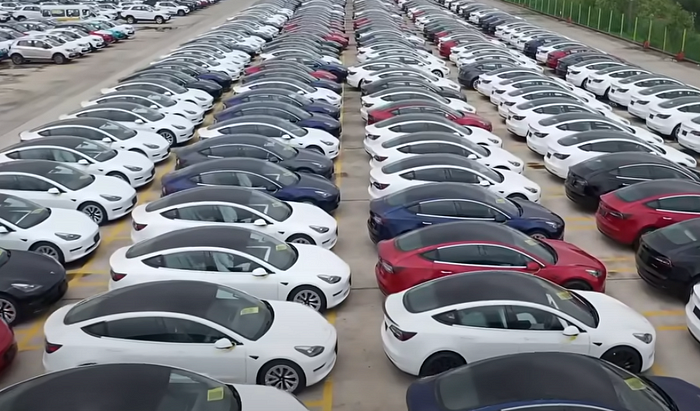Electric Vehicle Battery Technology: Powering the Future

The rise of electric vehicles (EVs) has revolutionized transportation, offering a cleaner and more sustainable alternative to gasoline-powered cars. But at the heart of this revolution lies the battery — the powerhouse that propels these vehicles. In this blog post, we’ll delve into the exciting world of EV battery technology and explore the advancements that are pushing the boundaries of electric mobility.
Under the Hood: Unveiling the Tech
Modern EVs primarily rely on Lithium-ion batteries, known for their high energy density and ability to store a significant amount of power in a relatively compact size. However, the quest for even better performance is driving innovation in several key areas:
- Next-Gen Battery Chemistry: Researchers are exploring alternatives to lithium-ion batteries, with solid-state batteries emerging as a promising contender. These batteries boast potentially higher energy densities, faster charging times, and improved safety due to their solid electrolyte composition. Imagine being able to charge your EV in minutes instead of hours, or traveling significantly longer distances on a single charge. Solid-state batteries hold the potential to revolutionize the EV experience.
- Smarter Energy Management: Optimizing battery performance and lifespan is crucial for a smooth EV experience. Enter the Battery Management System (BMS), the brain behind the battery pack. The BMS meticulously monitors each cell’s health, temperature, and state of charge, ensuring safe operation and even predicting the battery’s remaining life. Think of it as a vigilant guardian, constantly keeping an eye on the battery’s well-being and maximizing its efficiency.
- Electronic Control for Peak Efficiency: The Electronic Control Unit (ECU) acts as the conductor for the battery and electric motor. It controls the flow of power, optimizing performance by managing acceleration, regenerative braking, and overall energy consumption. Additionally, the ECU seamlessly integrates with other vehicle systems for a responsive and enjoyable driving experience. The ECU is essentially the mastermind behind the smooth and efficient operation of the entire EV drivetrain.
- Safety First: Safety is paramount in EV design, and the battery pack is no exception. Manufacturers incorporate robust safety features like flame-retardant materials, advanced thermal management systems to prevent overheating, and emergency shut-off mechanisms to isolate the battery in case of an accident. Additionally, the structural design of EVs often prioritizes a low center of gravity and reinforced frames for enhanced overall safety. Rest assured, EV engineers are laser-focused on creating vehicles that prioritize the safety of drivers and passengers.
Beyond Lithium-ion: Exploring New Avenues
The demand for EV batteries is skyrocketing, pushing the boundaries of cell development. Here are some key trends to watch:
- Boosting Energy Density: The goal is to pack more power into smaller batteries, extending the driving range of EVs and reducing the need for frequent charging. Imagine road trips without constantly worrying about finding charging stations — that’s the future envisioned with increased energy density.
- Sustainable Sourcing: Ensuring a responsible and ethically sourced supply chain for raw materials like lithium and cobalt is a critical focus. The EV industry is committed to building a sustainable future, and that includes ensuring the materials used in batteries are procured responsibly.
- Recycling Revolution: Developing efficient recycling processes for end-of-life batteries is crucial for a sustainable future. Just like we recycle our plastic and paper, efficient battery recycling will be essential as EV adoption grows. Additionally, research is underway to find alternative materials that could reduce reliance on critical elements. By finding more sustainable and readily available materials, we can ensure a long-term future for EV technology.
- Supercapacitors: Joining the Team: Supercapacitors are making their way into EVs as complementary storage devices. Their ability to absorb and release energy rapidly makes them ideal for tasks requiring bursts of power, like acceleration and regenerative braking. This can improve vehicle performance and reduce stress on the main battery, potentially extending its lifespan. Think of supercapacitors as the backup dancers for the main battery, providing extra bursts of energy when needed and taking some of the load off the star performer.
The Road Ahead: A Brighter Future for EVs
The field of EV battery technology is a dynamic landscape brimming with innovation. As research and development continue, we can expect even more advancements in areas like performance, safety, and sustainability. These advancements will not only make EVs a more attractive option for consumers but also contribute to a cleaner and greener future for our planet. So, buckle up and get ready for an exciting ride as EV battery technology continues to evolve, shaping the future of transportation!
In addition to the areas mentioned above, researchers are also exploring other promising avenues like lithium-sulfur batteries, which boast the potential for even higher energy densities than lithium-ion. The future of EV battery technology is brimming with possibilities, and these advancements have the potential to revolutionize the way we travel.
